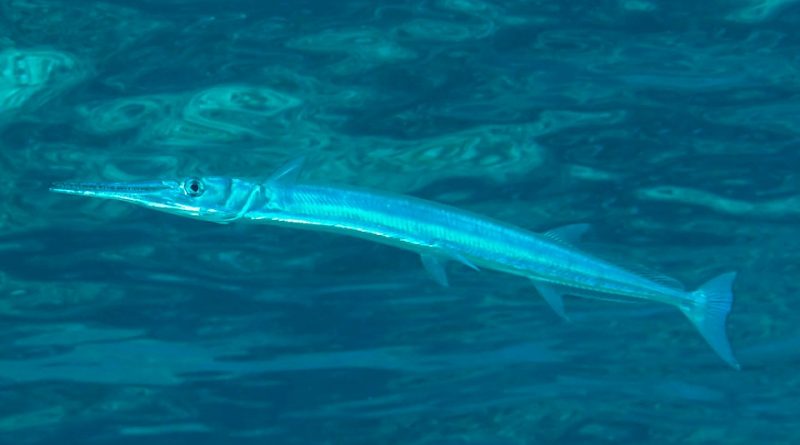Tylosurus acus
Tylosurus acus
The keel-jawed needlefish (Tylosurus acus Lacépède, 1803) is a sea fish belonging to the Belonidae family.
Systematics –
From a systematic point of view it belongs to:
Eukaryota Domain,
Kingdom Animalia,
Phylum Chordata,
Superclass Gnathostomata,
Actinopterygii class,
Subclass Neopterygii,
Infraclasse Teleostei,
Superorder Acanthopterygii,
Beloniformes order,
Suborder Belonoidei,
Belonidae family,
Genus Tylosurus,
T. acus species.
The terms are synonymous:
– Belone altipinna;
– Belone carribaea;
– Belone jonesii;
– Belone latimana;
– Sphyraena acus;
– Strongylura acus.
Within this species, the following subspecies are noted, although for some authors more subspecies are recognized:
– Tylosurus acus acus (Lacepede, 1803), present in the western Atlantic, from Massachusetts to Brazil and in the eastern Atlantic off Morocco and in the western Mediterranean;
– Tylosurus acus imperialis (Rafinesque, 1810), in the Mediterranean Sea and in the Cape Verde islands;
– Tylosurus acus melanotus (Bleeker, 1850), present in the islands of the Indo-western Pacific and oceanic islands in the Revillagigedo islands of the eastern tropical Pacific, in the island of Clipperton and in the island of Cocos.
– Tylosurus acus rafale Collette and Parin, 1970, in the Gulf of Guinea.
Geographic Distribution and Habitat –
The keel-jawed needlefish is a fish typical of the seas with warm waters and which is found in a large area that includes the Mediterranean Sea and in the tropical Atlantic Ocean, both the American and African shores.
This species is not common in the Italian seas but has been reported in Liguria, in the Tyrrhenian Sea and in Sicily and it is to be expected that its frequency will increase due to the tropicalization of the Mediterranean. A couple of different subspecies are found in the Indian and Pacific oceans.
It is a pelagic species and usually lives offshore, approaching the coasts in late summer.
Description –
The Tylosurus acus is a fish with a very slender body, elongated with an almost circular section and covered with very minute scales, which do not extend on the head and which reaches a maximum length of 150 cm.
The lateral line runs along the lower edge of the sides, and arrives at the beginning of the tail. On the tail peduncle there are two short lateral keels.
The head is equipped with slender jaws, prolonged in the shape of a beak and the lower is longer than the upper.
The teeth are sharp and quite large and in the jaw they are larger.
The nostrils are wide and triangular in shape.
The only dorsal begins at the height of the anal or immediately after and the first ray is much smaller than the second; the other rays decrease to the seventh, then become higher and higher. Anal has a similar trend. The tail has the most developed lower lobe. The pecs are short. The ventral ones have the first ray thicker like the pectorals.
The back is dark blue in color, silvery sides and belly. The dorsal and ventral parts are separated by a darker stripe. The iris is silvery, with blue shadows. The dorsal fin is blackish in the posterior half. The pectorals greyish, anal and ventral whitish, the tail transparent, tinged with black at the base.
Biology –
Tylosurus acus is a pelagic species, which in certain periods comes close to the coast. Reproduction probably occurs in the open sea.
Eggs have adhesive filaments and can form aggregates on the surface or be attached to floating objects.
Ecological Role –
The keel-jawed needlefish is a carnivorous species that feeds on fish, especially saurian, clupeidae, flying fish and other small pelagic fish.
This species is caught with the same methods used for garfish. Given that it is often associated with shoals of saury, it can be caught in the purse seine used for fishing for this species.
The meat is as good as that of the garfish but, like this, it is depreciated by the green color of the bones.
Guido Bissanti
Sources
– Wikipedia, the free encyclopedia.
– Louisy P., 2016. Guide to the identification of marine fish of Europe and the Mediterranean. Il Castello Editore, Milan.
– Nikiforos G., 2008. Mediterranean fauna. Giunti Editore, Florence.


